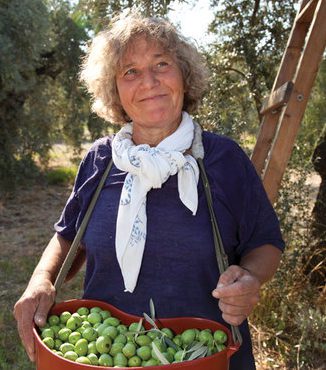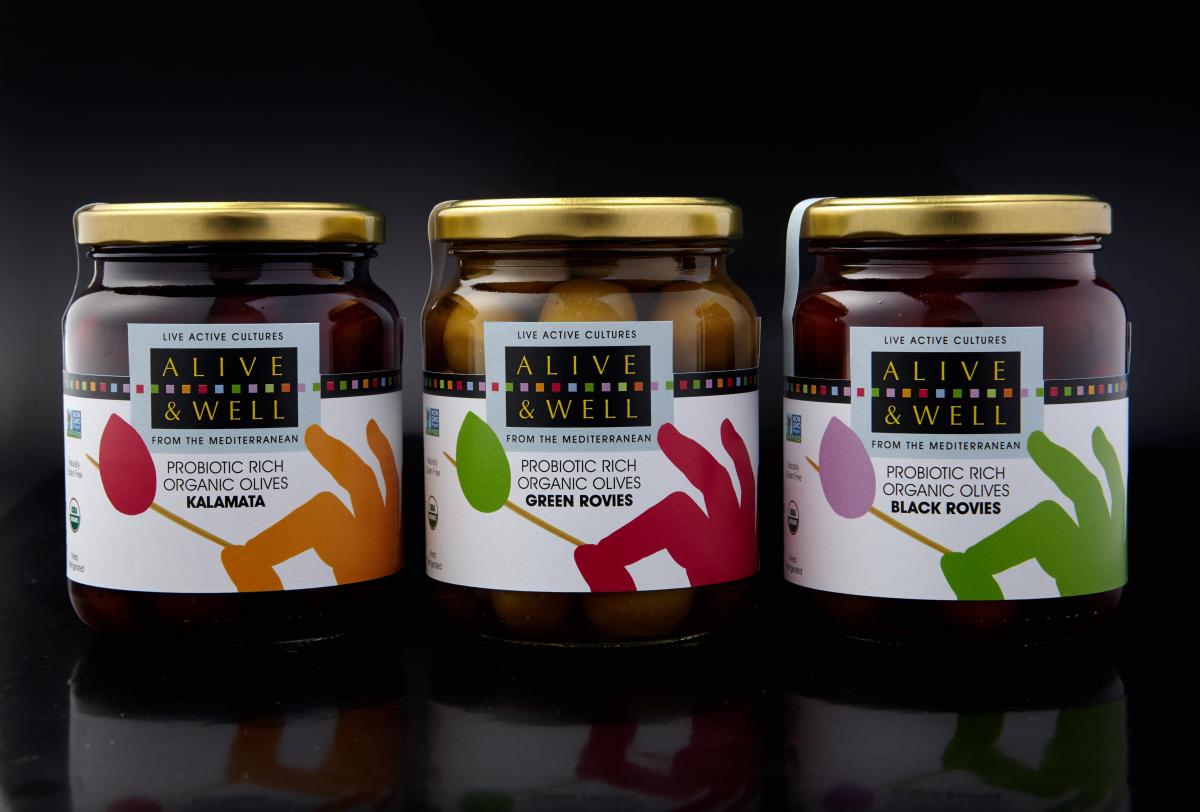
This exclusive collection of Alive & Well Olives are grown by small family farms and village co-ops in Greece, who follow the same traditional agricultural methods used in the region for thousands of years. They represent the essence of sustainable agriculture, using natural fertilization, dry-farming, reliance on seasonal rainfall, and expert pruning to ensure the robust health of the trees.
 The families involved cultivate and tend the groves, harvest the crop, and transfer the fruit to communally owned vats in the vicinity of the olive groves. Unlike conventional olive growing, the fruit is handpicked and quickly prepared for fermentation, promising optimum freshness and taste. Fermentation occurs spontaneously as the cultures carried on the skin of the olives become active in the brine within hours of picking. The fermentation brine is made with unrefined sea-salt from regional salt flats. These natural cultures include several varieties of lactobacillus, yeasts, and enzymes, specific to the location. This rich diversity of cultures is responsible for the special character of olives from a particular location. The olives remain undisturbed in the fermenting, “mother” brine until they are packed for shipment to market. The communal facility has jar-filling and labeling equipment run by members of the group as well.
The families involved cultivate and tend the groves, harvest the crop, and transfer the fruit to communally owned vats in the vicinity of the olive groves. Unlike conventional olive growing, the fruit is handpicked and quickly prepared for fermentation, promising optimum freshness and taste. Fermentation occurs spontaneously as the cultures carried on the skin of the olives become active in the brine within hours of picking. The fermentation brine is made with unrefined sea-salt from regional salt flats. These natural cultures include several varieties of lactobacillus, yeasts, and enzymes, specific to the location. This rich diversity of cultures is responsible for the special character of olives from a particular location. The olives remain undisturbed in the fermenting, “mother” brine until they are packed for shipment to market. The communal facility has jar-filling and labeling equipment run by members of the group as well.
You’ll find Alive & Well Probiotic Olives in the refrigerated section. These can only be found at Kimberton Whole Foods and other independent, natural retailers.







Does anyone know if the Alive and Well green Rovies naturally have little spots all over them after they are fermented?
Hi Audrey, Thanks for reaching out! I am working on getting an answer for you – thanks so much for your patience. -Emily at KWF
Hello Audrey, Thank you for your patience! This is the answer we received from the company:
The white spots are not mold but there are two possibilities that we occasionally see:
1) The naturally occurring olive oil in our olives sometimes coagulates under refrigeration, particularly if it’s especially cold. Take your jar out of your refrigerator and allow the jar to come to room temperature. If it’s coagulated olive oil it will disburse and disappear.
2) The other possibility is that it is kahm yeast, a substance on the surface of the brine which is ever-present in the environment and, if the opened jar is exposed to this yeast, will grow on the surface of the brine. It is not found in the jarred product because the live cultures prevent its growth and there is very little oxygen, necessary for the yeast to grow, in the filled and sealed jar. When a jar is opened and some olives removed, kahm yeasts will invariably be introduced in amounts that depend on ambient conditions. If a lot of it is floating in the air the film is likely to develop faster, also, a half empty jar provides plenty of oxygen required for growth of the yeast. This will take place at refrigerator temperatures as well only at a slower rate. Remember the yeast is not in the product, it is introduced when it is opened and handled. The following is a good reference to the issue which is common in fermented vegetables. https://www.fermentedfoodlab.com/what-is-that-white-milky-stuff-on-my-fermented-veggies/
If it is kahm yeast, the olives are still safe to eat once the surface layer of yeast is removed, the yeast is harmless.
Hi does anyone know if they deliver raw olives straight from the tree without anything being done to them ? I would like to brine my own olives
Thanks
Ben
Hello, thanks for reaching out! I suggest reaching out to Alive & Well directly with your inquiry: http://www.aliveandwellolives.com/ Thank you! -Emily at KWF